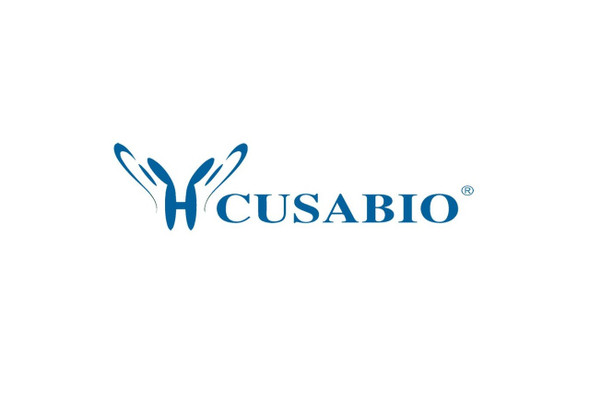Cusabio Human Recombinants
Recombinant Human Iron-sulfur cluster assembly enzyme ISCU, mitochondrial (ISCU) | CSB-BP887955HU
- SKU:
- CSB-BP887955HU
- Availability:
- 3 - 7 Working Days
Description
Recombinant Human Iron-sulfur cluster assembly enzyme ISCU, mitochondrial (ISCU) | CSB-BP887955HU | Cusabio
Alternative Name(s): NifU-like N-terminal domain-containing protein (NifU-like protein) (NIFUN)
Gene Names: ISCU
Research Areas: Metabolism
Organism: Homo sapiens (Human)
AA Sequence: YHKKVVDHYENPRNVGSLDKTSKNVGTGLVGAPACGDVMKLQIQVDEKGKIVDARFKTFGCGSAIASSSLATEWVKGKTVEEALTIKNTDIAKELCLPPVKLHCSMLAEDAIKAALADYKLKQEPKKGEAEKK
Source: Baculovirus
Tag Info: N-terminal 10xHis-tagged and C-terminal Myc-tagged
Expression Region: 35-167aa
Sequence Info: Full Length of Mature Protein
MW: 18.3
Purity: Greater than 90% as determined by SDS-PAGE.
Relevance: Scaffold protein for the de novo synthesis of iron-sulfur clusters within mitochondria, which is required for maturation of both mitochondrial and cytoplasmic [2Fe-2S] and [4Fe-4S] proteins. First, a [2Fe-2S] cluster is transiently assembled on the scaffold protein ISCU. In a second step, the cluster is released from ISCU, transferred to a glutaredoxin GLRX5, followed by the formation of mitochondrial [2Fe-2S] proteins, the synthesis of [4Fe-4S] clusters and their target-specific insertion into the recipient apoproteins. Cluster assembly on ISCU depends on the function of the cysteine desulfurase complex NFS1-LYRM4/ISD11, which serves as the sulfur donor for cluster synthesis, the iron-binding protein frataxin as the putative iron donor, and the electron transfer chain comprised of ferredoxin reductase and ferredoxin, which receive their electrons from NADH.
Reference: "Functional analysis of GLRX5 mutants reveals distinct functionalities of GLRX5 protein." Liu G., Wang Y., Anderson G.J., Camaschella C., Chang Y., Nie G. J. Cell. Biochem. 117:207-217(2016)
Storage: The shelf life is related to many factors, storage state, buffer ingredients, storage temperature and the stability of the protein itself. Generally, the shelf life of liquid form is 6 months at -20?/-80?. The shelf life of lyophilized form is 12 months at -20?/-80?.
Notes: Repeated freezing and thawing is not recommended. Store working aliquots at 4? for up to one week.
Function:
Involvement in disease:
Subcellular Location:
Protein Families:
Tissue Specificity:
Paythway:
Form: Liquid or Lyophilized powder
Buffer: If the delivery form is liquid, the default storage buffer is Tris/PBS-based buffer, 5%-50% glycerol. If the delivery form is lyophilized powder, the buffer before lyophilization is Tris/PBS-based buffer, 6% Trehalose, pH 8.0.
Reconstitution: We recommend that this vial be briefly centrifuged prior to opening to bring the contents to the bottom. Please reconstitute protein in deionized sterile water to a concentration of 0.1-1.0 mg/mL.We recommend to add 5-50% of glycerol (final concentration) and aliquot for long-term storage at -20?/-80?. Our default final concentration of glycerol is 50%. Customers could use it as reference.
Uniprot ID: Q9H1K1
HGNC Database Link: N/A
UniGene Database Link: N/A
KEGG Database Link: N/A
STRING Database Link: N/A
OMIM Database Link: N/A






